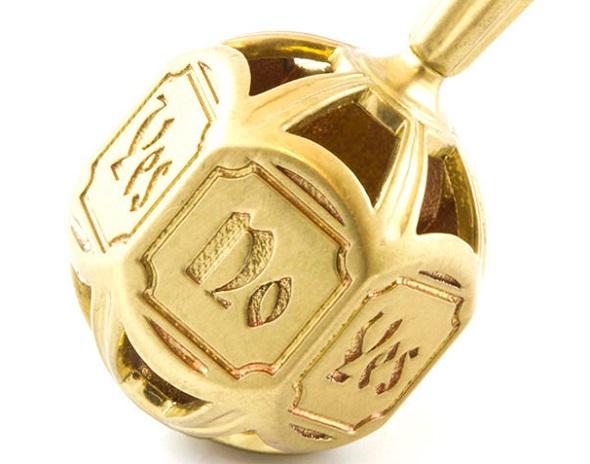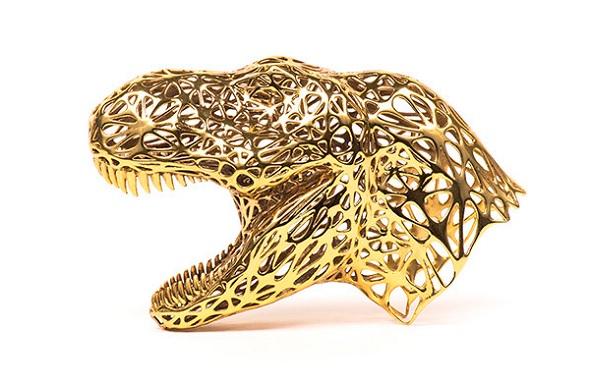 There’s hardly a better feeling than getting lost in that creative spirit, caught up in what can absolutely only be described as magic. It’s something artists know well—and having the proper tools to bring elegant designs to fruition makes the whole process that much more enjoyable.
There’s hardly a better feeling than getting lost in that creative spirit, caught up in what can absolutely only be described as magic. It’s something artists know well—and having the proper tools to bring elegant designs to fruition makes the whole process that much more enjoyable.
With the advent of digital design and 3D printing, and the emergence of expert 3D printing service bureaus and marketplaces like i.materialise, you could immerse yourself in the world of jewelry design and simply never find time to do another thing. As ideas abound and you get started in modeling jewelry to upload to their site, there are some things you naturally need to think about, without feeling intimidated.
The latest blog from i.materialise points out what you should mull over, and that of course begins with size. While larger sizes for something like bracelets are not a problem, you will want to keep in mind—if you’re planning to design a chunky arm cuff or something outlandishly large—that i.materialise does have a maximum printing size of up to 88 x 63 x 125 mm for having pieces made in gold, silver, bronze, or brass. If you need something made in a larger size, i.materialise recommends switching to other materials that they offer, featuring everything from titanium to polyamide, 18K gold, and more.
“Using 11 different 3D printing technologies, 20 different materials and over 100 possible color and finish combinations, we offer only the highest quality to turn your ideas into 3D printed reality,” says the team over at i.materialise, also recommending that you check out their Material Sample Kits to get an idea of exactly what they offer.
The next thing you need to consider is the minimum wall thickness of your design. For most prints, it will need to be between 0.06 and 0.8 mm. According to i.materialise, that will depend completely on what material and finish you are interested in using, and they suggest checking out their material design guide too. It’s pretty extensive and should school you up quickly in that area. If you check out the image of the gold-plated brass cuff-links you’ll see an example where i.materialise used a minimum wall thickness of 0.8 mm so that the walls would not be too thin. It’s generally recommended to use a wall thickness of at least 1 mm. You can check out a full tutorial from i.materialise that explains how to get the perfect wall thickness every time, with the main discussion revolving around materials.
If you check out the image of the gold-plated brass cuff-links you’ll see an example where i.materialise used a minimum wall thickness of 0.8 mm so that the walls would not be too thin. It’s generally recommended to use a wall thickness of at least 1 mm. You can check out a full tutorial from i.materialise that explains how to get the perfect wall thickness every time, with the main discussion revolving around materials.
Will your design bear small, decorative details or embossing? If so, consideration for minimum size of small details comes into play. The smallest features, according to i.materialise, should be at least 0.35 mm in diameter and 0.4 mm in height.
“Longer features such as rods should be at least 0.8 mm in diameter, or they might break during the casting,” states Fabian in the i.materialise blog.
Next, you need to consider whether or not you will be hollowing:
“If you want to design a hollow model make sure to include more than one release hole – ideally you should have a minimum of three,” states Fabian in the i.materialise blog. “The exact size of the holes depends on the design and the size of the model but you should try to choose 1.5 mm as the minimum size.
Check out the great tutorial on hollowing, which explains how to do this and save money on your 3D printing as quite simply, you aren’t using as much material and pricing for 3D printing is volume-based. As they point out at i.materialise, it’s easy: just don’t use material where you don’t need it.
 And while you may really want to save money and make those walls as thin as possible, obviously that could lead to disaster if taken to the extreme, resulting in fragile models and parts that break easily. You don’t want your fine work caving in!
And while you may really want to save money and make those walls as thin as possible, obviously that could lead to disaster if taken to the extreme, resulting in fragile models and parts that break easily. You don’t want your fine work caving in!
And last in line from the jewelry modeling tips at i.materialise, if you were planning on grouping models in one file—think again, as they cannot accept more than one object in one file.
“If you need several prints of the same file, just upload your file and adjust the ‘quantity counter,” says Fabian. “This will also lead to a nice discount.”
Note that these tips from i.materialise really only apply to 3D prints you are requesting for them to make in the materials of gold, silver, bronze, and brass. Checking out the design guides offer a wealth of free information, and you’ll certainly walk away from a lot of invaluable information about materials, no matter what you decide to do.
Is your 3D model ready to go? If so, just upload it to i.materialise, adding just a bit of information, and you’ll quickly receive a quote and then be ready to send your model off to production. Discuss these tips further in the i.materialise 3D Jewelry Modeling forum over at 3DPB.com.
Subscribe to Our Email Newsletter
Stay up-to-date on all the latest news from the 3D printing industry and receive information and offers from third party vendors.
Print Services
Upload your 3D Models and get them printed quickly and efficiently.
You May Also Like
Havaianas Collaborates with Zellerfeld to Launch 3D Printed Flip-Flops
The shoe of the summer is undoubtedly the flip-flop. Easy on, easy off, your feet won’t get sweaty because there’s not much material, and they’re available in a veritable rainbow...
UCLA Researchers Develop 3D Printed Pen that May Help Detect Parkinson’s Disease
Diagnosing Parkinson’s disease is difficult. Often, early symptoms of the progressive neurological condition may be overlooked, or mistaken for signs of aging. Early diagnosis can help save lives and improve...
Printing Money Episode 30: Q1 2025 Public 3D Printing Earnings Review with Troy Jensen, Cantor Fitzgerald
Printing Money is back with Episode 30, and it’s that quarterly time, so we are happy and thankful to welcome back Troy Jensen (Managing Director, Cantor Fitzgerald) to review the...
Heating Up: 3D Systems’ Scott Green Discusses 3D Printing’s Potential in the Data Center Industry
The relentless rise of NVIDIA, the steadily increasing pledges of major private and public investments in national infrastructure projects around the world, and the general cultural obsession with AI have...


































